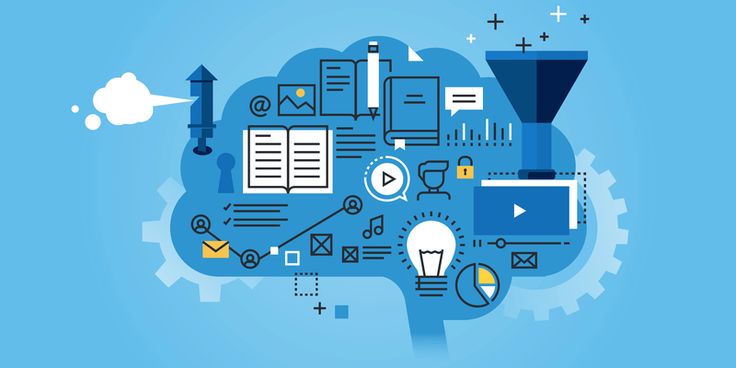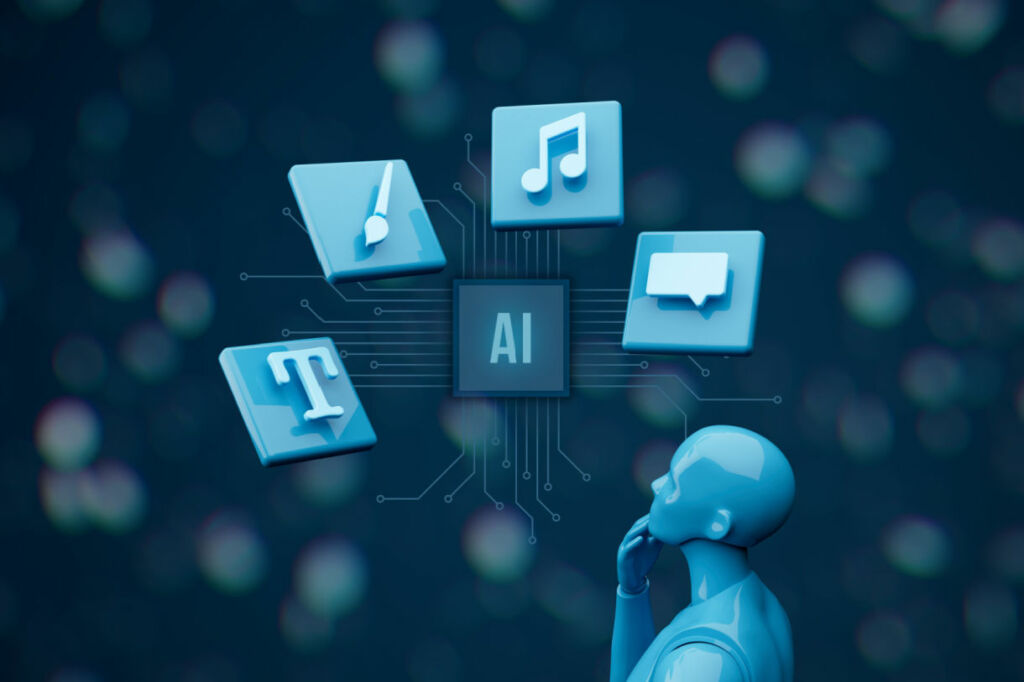In the fast-evolving world of software development and operations, the ability to rapidly and reliably manage infrastructure has become a paramount concern. Gone are the days of manual server provisioning, tedious network configurations, and error-prone deployments. Enter Infrastructure as Code (IaC), a revolutionary paradigm that treats infrastructure just like application code. By defining, provisioning, and managing infrastructure through machine-readable definition files rather than manual processes, IaC fundamentally transforms IT operations. This approach unlocks unparalleled levels of speed, consistency, scalability, and efficiency, making it a cornerstone for organizations striving for agility and continuous delivery in the cloud-native era.
From Manual to Code-Driven Infrastructure
To truly grasp the profound impact of Infrastructure as Code, it’s essential to understand the historical context and the inherent limitations of traditional, manual infrastructure management.
A. The Era of Manual Infrastructure Management
For decades, infrastructure provisioning and management were predominantly manual, painstaking, and often ad-hoc processes. IT administrators would log into servers, configure networks, install software, and set up databases one by one. This hands-on approach, while seemingly straightforward for small-scale operations, quickly became a significant bottleneck and a source of considerable risk as systems grew in complexity and scale.
- Time-Consuming and Slow: Manual configuration is inherently slow. Each server, network device, or database instance required human intervention, consuming valuable time that could otherwise be spent on innovation. This directly hindered the speed at which new applications could be deployed or existing ones updated, delaying time-to-market.
- Prone to Human Error: Humans are fallible. Manual processes are highly susceptible to errors, misconfigurations, and inconsistencies. A small typo or an overlooked step could lead to significant outages, security vulnerabilities, or performance issues, often requiring extensive troubleshooting to identify the root cause. This ‘configuration drift’ between environments (development, staging, production) was a chronic problem.
- Lack of Consistency and Reproducibility: Reproducing an identical environment manually is virtually impossible. Slight variations inevitably creep in, making it difficult to guarantee that a development environment precisely mirrors production. This inconsistency made debugging challenging and compromised the reliability of deployments, often leading to the infamous ‘it works on my machine’ syndrome.
- Difficult to Scale: Scaling infrastructure manually is a daunting task. Adding new servers, configuring load balancers, and integrating them into existing systems required significant effort for each addition. This lack of automation severely limited an organization’s ability to respond quickly to increased demand or to provision disposable environments for testing.
- Poor Documentation and Knowledge Silos: Manual changes were often poorly documented, relying on tribal knowledge or informal notes. When an administrator left, their expertise often departed with them, leaving critical infrastructure configurations poorly understood and difficult to replicate or troubleshoot. This created significant knowledge silos and operational fragility.
B. The Rise of Infrastructure as Code: A Paradigm Shift
In stark contrast, Infrastructure as Code (IaC) emerged as a powerful, automated, and codified response to these pervasive challenges. IaC applies the principles of software development—such as version control, automated testing, and modularity—to infrastructure provisioning and management.
- Infrastructure Defined in Code: With IaC, infrastructure resources (servers, virtual machines, networks, databases, load balancers, firewalls, etc.) are defined in human-readable and machine-executable configuration files. These files become the single source of truth for the desired state of the infrastructure.
- Version Control and Collaboration: Just like application code, these infrastructure definition files are stored in version control systems (e.g., Git). This enables tracking every change, rolling back to previous versions, collaborating effectively among teams, and conducting peer reviews (pull requests) on infrastructure modifications.
- Automated Provisioning and Configuration: Specialized IaC tools (e.g., Terraform, Ansible, Chef, Puppet, AWS CloudFormation, Azure Resource Manager) read these definition files and automatically provision and configure the infrastructure according to the specified desired state. This eliminates manual intervention and ensures consistent, repeatable deployments.
- Idempotency: Consistent Results Every Time: A core tenet of IaC is idempotency. This means that applying the same IaC script multiple times will always result in the same infrastructure state. If the infrastructure is already in the desired state, no changes are made. If it’s not, the tool makes the necessary adjustments to reach the desired state. This is crucial for consistency and error reduction.
- Immutable Infrastructure Principle: While not strictly exclusive to IaC, IaC strongly encourages the concept of immutable infrastructure. Instead of making changes to existing servers, new servers are provisioned with the updated configuration, and old ones are decommissioned. This drastically reduces configuration drift and makes deployments more predictable and reliable.
This code-driven, automated approach fundamentally reshapes how organizations interact with their infrastructure, fostering greater agility, reliability, and efficiency across the entire IT landscape.
Core Principles and Defining Characteristics of Infrastructure as Code
Infrastructure as Code is underpinned by several foundational principles and exhibits distinct characteristics that differentiate it from traditional manual or script-based automation.
A. Declarative vs. Imperative Approaches
IaC tools generally fall into two main categories based on how infrastructure is defined:
- Declarative IaC: This approach focuses on what the desired state of the infrastructure should be. You describe the end state (e.g., “I want an EC2 instance with this AMI, this many CPUs, and this security group”), and the IaC tool figures out the steps to achieve that state. Tools like Terraform, AWS CloudFormation, and Azure Resource Manager (ARM) are primarily declarative. This is generally preferred for its simplicity and robustness, as the tool handles state management and idempotent operations.
- Imperative IaC: This approach focuses on how to achieve a desired state through a sequence of commands or scripts. You define the exact steps to provision and configure resources (e.g., “first, create this server; then, install this software; then, configure this service”). Tools like Ansible, Chef, and Puppet can operate imperatively (though they often combine declarative elements for specific resource definitions). While offering granular control, imperative IaC can be more complex to manage for idempotent operations and state consistency.
B. Version Control System Integration
A cornerstone of IaC is the integration with version control systems (VCS), primarily Git. Storing infrastructure definitions in Git brings immense benefits:
- Change Tracking: Every modification to the infrastructure definition is tracked, showing who made what change and when.
- Rollbacks: The ability to easily revert to a previous, known-good state if a deployment introduces issues.
- Collaboration: Teams can collaborate on infrastructure changes using standard Git workflows (branches, pull requests, merges).
- Auditing: A complete history of infrastructure changes is available for auditing, compliance, and debugging.
C. Idempotency: Predictable Outcomes
Idempotency is a critical property in IaC. It means that applying an IaC configuration multiple times will always yield the same result. The IaC tool is intelligent enough to determine if a resource already exists in the desired state. If it does, no changes are made. If it doesn’t, or if its configuration deviates, the tool makes only the necessary modifications to bring it to the specified desired state. This predictability is vital for reliable and consistent deployments, eliminating the ‘snowflake server’ problem where each server becomes unique over time.
D. Immutability: Reducing Configuration Drift
While not strictly a requirement, IaC strongly promotes the concept of immutable infrastructure. Instead of modifying existing servers or components in place (which can lead to configuration drift and unpredictable behavior), IaC encourages provisioning entirely new infrastructure instances with the updated configurations. Once a new version is ready, traffic is shifted to the new instances, and the old ones are decommissioned. This approach drastically reduces the risk of environment inconsistencies and makes rollbacks simpler and safer.
E. Modularity and Reusability
Effective IaC practices emphasize modularity and reusability. Infrastructure definitions can be broken down into smaller, reusable components (e.g., modules, templates, roles) that represent common infrastructure patterns (e.g., a standard web server configuration, a database cluster, a networking stack). These modules can then be composed to build more complex environments, reducing duplication, improving maintainability, and accelerating provisioning.
F. Automated Testing and Validation
Just like application code, IaC definitions can and should be subjected to automated testing. This includes:
- Syntax Validation: Checking for basic syntax errors in the configuration files.
- Static Analysis: Linting and security checks for potential vulnerabilities or misconfigurations.
- Unit/Integration Testing: Testing individual modules or small groups of resources to ensure they deploy as expected.
- End-to-End Testing: Deploying a full environment in a temporary sandbox and running automated tests against it to validate functionality before deploying to production.
Automated testing catches errors early, significantly reducing the risk of issues in production environments.
Key Advantages of Adopting Infrastructure as Code
The transition to Infrastructure as Code offers a multitude of compelling benefits that directly address the pain points of traditional infrastructure management, empowering organizations to achieve greater operational excellence and agility.
A. Enhanced Speed and Rapid Provisioning
One of the most immediate and tangible benefits of IaC is the dramatic increase in speed and efficiency of infrastructure provisioning. Instead of days or weeks spent manually setting up environments, IaC allows for environments to be provisioned in minutes or hours. This rapid provisioning accelerates the entire development lifecycle, enabling developers to get new environments for testing or new features deployed to production significantly faster. It supports rapid experimentation and reduces the time-to-market for new products and services.
B. Superior Consistency and Reproducibility
IaC guarantees unparalleled consistency and reproducibility across all environments – from development and testing to staging and production. Since infrastructure is defined in code, every deployment from that code will result in an identical environment. This eliminates configuration drift, eradicates the ‘it works on my machine’ problem, and ensures that what developers test is exactly what users experience in production, leading to far more reliable and predictable deployments. It also makes disaster recovery more straightforward, as entire infrastructures can be rebuilt from code.
C. Significant Cost Reduction
While IaC involves an initial investment in tooling and training, it leads to significant long-term cost reductions. By automating repetitive tasks, the need for extensive manual labor is drastically reduced, freeing up valuable IT personnel to focus on more strategic initiatives. The ability to quickly provision and de-provision resources means organizations only pay for what they need, when they need it, especially in cloud environments, leading to optimized cloud spending. Reduced errors and faster incident resolution also contribute to cost savings by minimizing downtime.
D. Improved Collaboration and Transparency
Storing infrastructure definitions in version control systems like Git fosters enhanced collaboration and transparency within and across teams. Developers, operations engineers (Ops), and security teams can work together on infrastructure changes using familiar software development workflows like pull requests and code reviews. This promotes shared understanding, facilitates knowledge transfer, and reduces communication silos, breaking down traditional barriers between Dev and Ops, a key aspect of DevOps culture. Every change is tracked, visible, and auditable.
E. Enhanced Security and Compliance
IaC significantly improves security and compliance. By defining security configurations (e.g., firewall rules, IAM policies, encryption settings) in code, organizations can enforce security best practices consistently across all environments. Automated checks can be integrated into CI/CD pipelines to validate security configurations before deployment. This reduces the risk of human error leading to security vulnerabilities and simplifies auditing, as the desired state of infrastructure security is explicitly documented and version-controlled. Compliance adherence becomes more verifiable and repeatable.
F. Disaster Recovery and Business Continuity
IaC dramatically simplifies disaster recovery and enhances business continuity. In the event of a catastrophic failure, an entire infrastructure stack can be quickly rebuilt from its IaC definitions. Instead of relying on manual recovery steps or complex backups of running systems, organizations can leverage their IaC repository as the ultimate blueprint for recovery. This enables faster recovery time objectives (RTOs) and lower recovery point objectives (RPOs), ensuring minimal disruption to critical business operations.
G. Supports DevOps and Cloud-Native Adoption
IaC is a fundamental enabler of DevOps culture and cloud-native application development. It provides the automation backbone necessary for continuous integration, continuous delivery (CI/CD), and continuous deployment. By abstracting away infrastructure complexities, it empowers developers to rapidly provision the environments they need. For cloud-native architectures (like microservices and serverless), IaC is indispensable for managing the dynamic, ephemeral, and often vast number of resources required.
Challenges and Considerations in IaC Adoption
While Infrastructure as Code offers transformative benefits, its adoption is not without its challenges. Organizations must be prepared to address these complexities to ensure a successful implementation.
A. Initial Learning Curve and Skill Gap
Implementing IaC requires new skills and a shift in mindset for both developers and operations teams. Learning specific IaC tools (e.g., Terraform’s HashiCorp Configuration Language, CloudFormation’s YAML/JSON syntax, Ansible playbooks) and understanding their nuances presents an initial learning curve. Operations teams, traditionally accustomed to manual processes, must transition to a code-centric approach, potentially requiring significant upskilling and training. Bridging this skill gap can be a significant hurdle.
B. Tooling Selection and Ecosystem Complexity
The IaC landscape is rich but complex, with numerous tools available, each with its strengths, weaknesses, and specific use cases. Choosing the right tool(s) (e.g., Terraform for provisioning, Ansible for configuration management, Kubernetes for orchestration, specialized cloud provider tools) can be challenging. Integrating these tools into a cohesive pipeline and managing their dependencies adds another layer of tooling complexity, requiring expertise in orchestration and automation.
C. State Management Challenges (for Declarative Tools)
For declarative IaC tools like Terraform, managing the infrastructure state file is critical. This file tracks the real-world state of your infrastructure and maps it to your code. Incorrectly managed state files can lead to serious issues, such as resource deletion or misconfiguration. Securely storing, locking, and backing up state files (especially in collaborative environments) requires careful planning and robust practices.
D. Security and Access Control
While IaC enhances security through consistency, it also introduces new security considerations. The credentials used by IaC tools to interact with cloud providers or on-premises systems have extensive permissions. Managing these secrets and access controls securely (e.g., using secret management services, granular IAM policies, least privilege principles) is paramount to prevent unauthorized infrastructure changes or breaches. A compromised IaC pipeline can have far-reaching consequences.
E. Testing and Validation Complexity
Testing IaC, especially integration and end-to-end testing of complex infrastructure deployments, can be challenging. It often requires spinning up isolated, temporary environments, running extensive validation checks, and then tearing them down. Developing robust testing strategies for IaC (beyond simple syntax validation) demands specialized frameworks and a disciplined approach to ensure the deployed infrastructure behaves as expected under various conditions.
F. Migration from Existing Manual Infrastructure
For organizations with existing, manually provisioned infrastructure, migrating to an IaC model can be a substantial undertaking. Identifying the current state, refactoring existing configurations into code, and managing the transition without disrupting live systems can be a complex and time-consuming process. This often involves adopting a gradual, incremental approach, like the Strangler Fig Pattern, rather than a ‘big bang’ migration.
G. Potential for Accidental Destructive Changes
The power of IaC to provision and de-provision vast amounts of infrastructure rapidly also carries the risk of accidental destructive changes. A misconfigured script or an unintended command can wipe out entire environments or critical resources in moments. Implementing robust review processes, strict access controls, dry-run capabilities, and automated safeguards (like drift detection) is essential to mitigate this risk.
Best Practices for Successful IaC Implementation
To maximize the benefits of Infrastructure as Code and effectively mitigate its inherent complexities, organizations should rigorously adhere to a set of proven best practices. These guidelines are crucial for designing, developing, and operating IaC-driven systems efficiently and securely.
A. Treat Infrastructure as First-Class Code
Embrace the core philosophy: treat your infrastructure definitions as first-class application code. This means storing all IaC files in a version control system (VCS), preferably Git. Implement standard software development practices such as branching strategies, pull requests (PRs) for peer review of changes, and regular commits with descriptive messages. This ensures a complete audit trail, easy rollbacks, and effective team collaboration.
B. Start Small and Iterate Incrementally
Avoid the temptation of a ‘big bang’ migration. Instead, start small and iterate incrementally. Begin by automating the provisioning of a single, non-critical component or a new, greenfield project using IaC. Learn from this experience, refine your processes, and gradually expand the scope of IaC adoption across your infrastructure. This iterative approach reduces risk and allows teams to build expertise organically.
C. Choose the Right Tools for the Job
Carefully select IaC tools that align with your organizational needs, existing technology stack, and target cloud providers. For instance:
- Provisioning: Terraform (cloud-agnostic) or cloud-specific tools like AWS CloudFormation or Azure Resource Manager are excellent choices for defining and provisioning infrastructure resources.
- Configuration Management: Ansible, Chef, or Puppet are strong for installing software, managing services, and configuring operating systems within instances.
- Container Orchestration: Kubernetes is the standard for managing containerized applications, often provisioned by Terraform.
- Policy Enforcement: Tools like Open Policy Agent (OPA) or cloud-native policy services (e.g., AWS Organizations SCPs, Azure Policy) for defining guardrails.
Often, a combination of tools is used to cover the entire infrastructure lifecycle.
D. Design for Idempotency and Immutability
Ensure your IaC configurations are idempotent, meaning applying them multiple times yields the same result. Leverage the features of your chosen IaC tools that support this inherently. Furthermore, strongly encourage the immutable infrastructure pattern. Instead of modifying existing servers, provision new ones with updated configurations, gracefully migrate traffic, and then decommission the old instances. This significantly reduces configuration drift and makes deployments more predictable and reliable.
E. Implement Robust Automated Testing for IaC
Just like application code, your IaC definitions require rigorous testing. Implement a comprehensive testing strategy that includes:
- Linting and Syntax Validation: Use tools to check for common errors and ensure adherence to best practices
- Static Analysis and Security Checks: Tools that analyze your code for potential security vulnerabilities or misconfigurations (e.g., Checkov, tfsec).
- Unit and Integration Tests: Test individual IaC modules or small groups of interconnected resources in isolated environments.
- End-to-End/Acceptance Tests: Deploy a complete, temporary environment from your IaC and run automated functional and performance tests against it before deploying to production.
Automated testing shifts left, catching errors early in the development cycle.
F. Securely Manage Credentials and Access
Given the powerful capabilities of IaC tools, managing credentials and access control is paramount. Adhere to the principle of least privilege, granting IaC tools and pipeline users only the minimum necessary permissions to perform their tasks. Use dedicated secret management services (e.g., AWS Secrets Manager, Azure Key Vault, HashiCorp Vault) to store sensitive information (API keys, database passwords) securely. Implement multi-factor authentication (MFA) and regularly audit access policies.
G. Embrace Modularity and Reusability
Break down your IaC definitions into smaller, reusable modules, templates, or roles. These modules should encapsulate common infrastructure patterns (e.g., a VPC definition, a standard web server cluster, a database instance). Reusing these standardized modules reduces duplication, improves consistency across projects, and accelerates the provisioning of new environments. Versioning these modules independently allows for better management of dependencies.
H. Build a Comprehensive Observability Stack
For IaC-managed infrastructure, robust observability is key. Implement centralized logging, monitoring, and alerting for all provisioned resources. Use the IaC itself to provision and configure logging agents and monitoring endpoints. Collect metrics on resource utilization, performance, and health. Integrate with dashboards and alerting systems to gain real-time insights into your infrastructure and quickly identify and troubleshoot issues.
I. Foster a Collaborative DevOps Culture
IaC is a foundational pillar of DevOps. Cultivate a collaborative culture where developers and operations engineers work hand-in-hand. This involves shared ownership of IaC code, cross functional teams, and a mutual understanding of both application and infrastructure needs. Encourage knowledge sharing, joint problem-solving, and continuous feedback loops to break down silos and improve the overall efficiency and reliability of software delivery.
J. Plan for State Management and Drift Detection
For declarative IaC tools, careful state management is critical. Store state files securely in a remote, versioned backend (e.g., S3, Azure Blob Storage, Terraform Cloud/Enterprise) and implement state locking to prevent concurrent modifications. Regularly perform drift detection to identify any manual changes made to infrastructure outside of IaC, ensuring that your code remains the single source of truth and preventing configuration inconsistencies.
The Future Landscape of Infrastructure as Code
The realm of Infrastructure as Code is dynamic and continuously evolving, driven by the increasing adoption of cloud computing, the rise of cloud native architectures, and the ongoing push for greater automation and resilience. Several key trends are poised to shape its future trajectory:
A. Greater Integration with Cloud-Native Ecosystems
Expect deeper and more seamless integration of IaC tools with cloud-native services and platforms. This will include tighter coupling with Kubernetes, serverless platforms, service meshes, and specialized data services. IaC will become an even more intrinsic part of defining the entire cloud-native application stack, from underlying infrastructure to application deployment configurations.
B. Policy as Code and Governance Automation
The emphasis on Policy as Code will grow exponentially. Organizations will increasingly define their compliance, security, and cost governance policies directly in code using tools like Open Policy Agent (OPA), AWS Organizations Service Control Policies (SCPs), or Azure Policy. These policies will be automatically enforced during IaC deployments, preventing misconfigurations and ensuring adherence to regulatory requirements and internal standards at scale.
C. AI/ML-Driven Infrastructure Optimization
Artificial intelligence and machine learning will play an increasing role in optimizing IaC. This could involve AI-powered recommendations for infrastructure sizing and cost optimization, automated detection and remediation of configuration drift, predictive analytics for preventing outages, and even autonomous infrastructure management that intelligently adapts to changing workloads.
D. Enhanced Developer Experience for IaC
As IaC becomes more pervasive, there will be a continuous focus on improving the developer experience (DX). This includes more intuitive IaC languages, better IDE integrations with auto-completion and validation, simplified local testing environments, and more sophisticated debugging tools that allow developers to simulate and troubleshoot infrastructure deployments before committing changes.
E. Beyond Provisioning: Lifecycle Management for Everything
IaC’s scope will expand beyond initial provisioning to encompass the entire lifecycle management of infrastructure resources, including updates, patching, auto remediation, and decommissioning. The concept of Everything as Code (X-as-Code) will gain further traction, extending IaC principles to security (Security as Code), network configuration (Network as Code), and even data management.
F. Increased Focus on Cloud Cost Management with IaC
As cloud spending continues to rise, IaC tools will integrate more deeply with cloud cost management and optimization. This will involve cost estimation features built directly into IaC tools, integration with FinOps practices, and the ability to define cost guardrails and enforce budget policies directly within the infrastructure definitions, promoting cost-aware infrastructure design.
Conclusion
Infrastructure as Code is no longer a niche concept but a fundamental necessity for any organization aiming to thrive in the modern digital economy. By treating infrastructure as a programmable asset, IaC transforms what was once a manual, error-prone, and time-consuming process into an automated, consistent, and highly efficient workflow. It underpins the agility of DevOps, empowers rapid cloud adoption, and significantly enhances the reliability, security, and scalability of IT operations.
While the journey to full IaC adoption presents its own set of challenges from the initial learning curve to complex state management the long-term benefits in terms of speed, consistency, cost efficiency, and resilience far outweigh these hurdles. By embracing best practices, investing in the right tools, and fostering a collaborative culture, organizations can unlock the full potential of IaC, building robust, adaptable, and future-proof infrastructure that directly drives business innovation and competitive advantage. The future of IT infrastructure is unquestionably code-driven, and IaC is the blueprint for building it.














